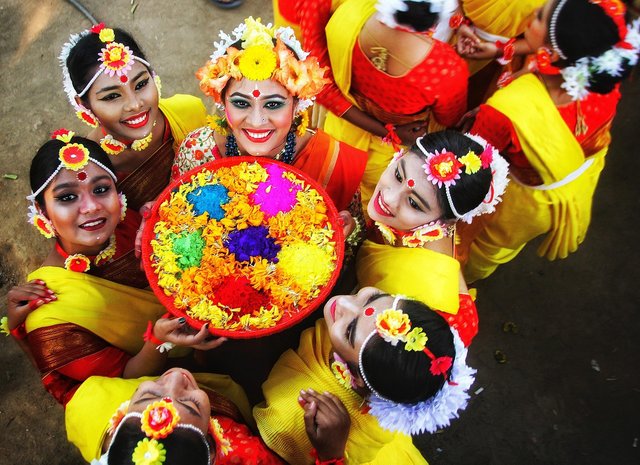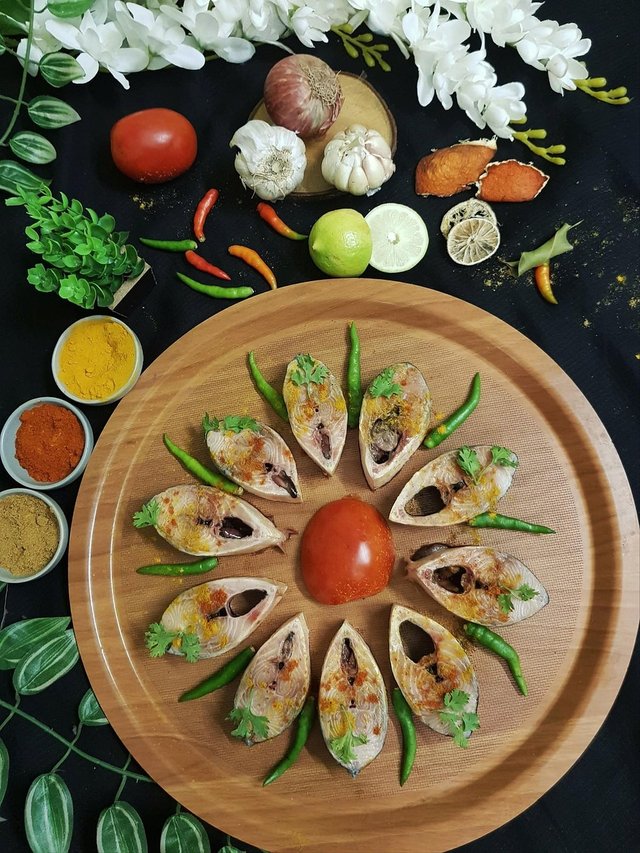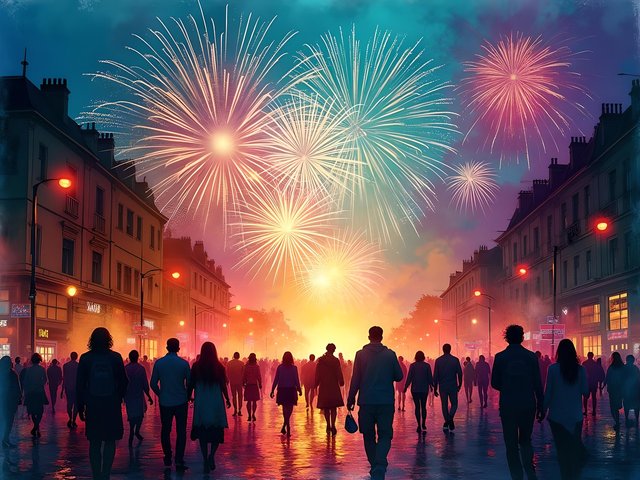Contest || The most Famous Festival Of My Country.
Hello Steemit friends,
How are you all? I pray that, by Allah's grace, everyone is doing well. With Allah's blessing, I am also doing well. Today, I will participate in the new competition of the Hindhowell community brought by the respected moderator @abdullahw2 sir.The competition is called "The Most Famous Festival in My Country". Thanks to the Hindhowell community for bringing this beautiful competition to us, So let's begin.
What is the most famous festival of your country? When it is celebrated or occurs?
The celebration of "Pahela Boishakh" or "Bangla Nababarsho". Bangladesh residents mark the occasion annually on April 14 when Bengali calendars start their yearly count. Bangladesh observes the holiday on April 14 because it starts the first day of the Bengali New Year. UNESCO has designated the "Mangal Shobhajatra" as a World Cultural Heritage, and it is one of the many vibrant activities across the nation that take place on this day.. Apart from this, Halkhata, Panta Bhat Khawa Rural Fair, Cultural Programs etc.are part of this festival.No matter their caste or religion, Bangladeshis celebrate it with great fervor as a worldwide holiday.
What is the significance of that festival in your country's traditions and in your religion?
Pahela Boishakh and its alternative name Bangla Nababarsha holds deep significance in both customs and culture throughout Bangladesh. Pahela Boishakh surpasses the simple act of updating the traditional calendar because it embodies three key elements of Bengali culture which include their agriculture-based lifestyle together with their societal arrangements.
Mangal Shobhajatra: It is a reflection of the non-communal spirit of Bengalis. Various symbolic masks, portraits of elephants, tigers birds are carried in this procession, which is considered a symbolic protest against the hope of good days and evil forces.
Halkhata: Traders open new account books and pay off old debts, which is an important part of commercial life.
- Grameen Mela: The Baisakhi Mela which features regional cuisine, handicrafts, and folk music,is one of the customs of rural culture.
🔹Religious and Cultural Significance:
Bangla New Year is primarily a secular festival, which is celebrated as part of Bengali tradition and culture. However it also has some religious implications:
- Hindu Culture: In the past, kings used to introduce a new revenue system by linking Bengali New Year with the agricultural season. Many Hindu families clean their houses on this day and worship.
- Muslim Culture: During the Mughal period, Emperor Akbar introduced the Bengali Year to facilitate the collection of taxes. Today, Muslims celebrate it socially and culturally outside of religious consciousness. Buddhists and Christians, as well as people of other religious groups, also celebrate this day joyfully and maintain mutual harmony.
How is that festival celebrated? Is there any traditional foods or activities linked to it?.
Bangla New Year stands as the greatest and most widespread festival in Bangladesh because people celebrate it with great joy across both cities and countryside. Traditional clothing from Bengal forms an essential part while social festivities unite with Bengali cultural heritage through food and music alongside traditional customs. Bengali New Year means special food arrangements. Panta Bhat and Hilsa Fish: According to the tradition of rural Bengal, Panta Bhat, fried Hilsa fish, and dried chili are the main dishes of the New Year.
- Different types of pithas : Chitai, Pati Sapta, Dudh Chitai, Narikel Puli, etc.
- Sweet dishes : Rasgolla, Sandesh, Mishti Dahi, Payes.
What is one unique fact about this festival that most people don’t know?
The close relationship between Bengali New Year and revenue and agricultural systems is one of its distinctive features. In order to align with the harvest season the Mughal Emperor Akbar instituted the Bengali year in 1584. At that time, it was known as "Fasli Year". Because, the Mughal rulers used to collect taxes according to the Hijri calendar, but since the Hijri year was based on the moon, it did not coincide with the agricultural season.Indeed, circumstances for agriculturists deteriorated such that fulfillment of fiscal obligations became exceedingly difficult. His Majesty Akbar, guided by the prudent counsel of leading astrologer Amir Fatehullah Siraji, thus instituted utilization of the Bengali calendar anchored in the solar system. Commencing that day,the initial date of Baishakh marked the time of levy collection, whereby the Halkhata mechanism was set in motion.Though untold numbers remain oblivious to such nuanced particulars from times past, this estimable change instituted one of the seminal cornerstones underpinning contemporary Bengali New Year festivities.
| SL No. | My Invited Steemit Friends |
|---|---|
| 1 | @sualeha |
| 2 | @pathanapsana |
| 3 | @ifatniza |
Best Regards
@khokonmia






X promotion link.
https://x.com/HafizurRah89095/status/1904780520078401539
Many informative post. You explain about hindu culture nicely. You represent our bengali traditional festival and foods. Thanks for sharing. Friend.